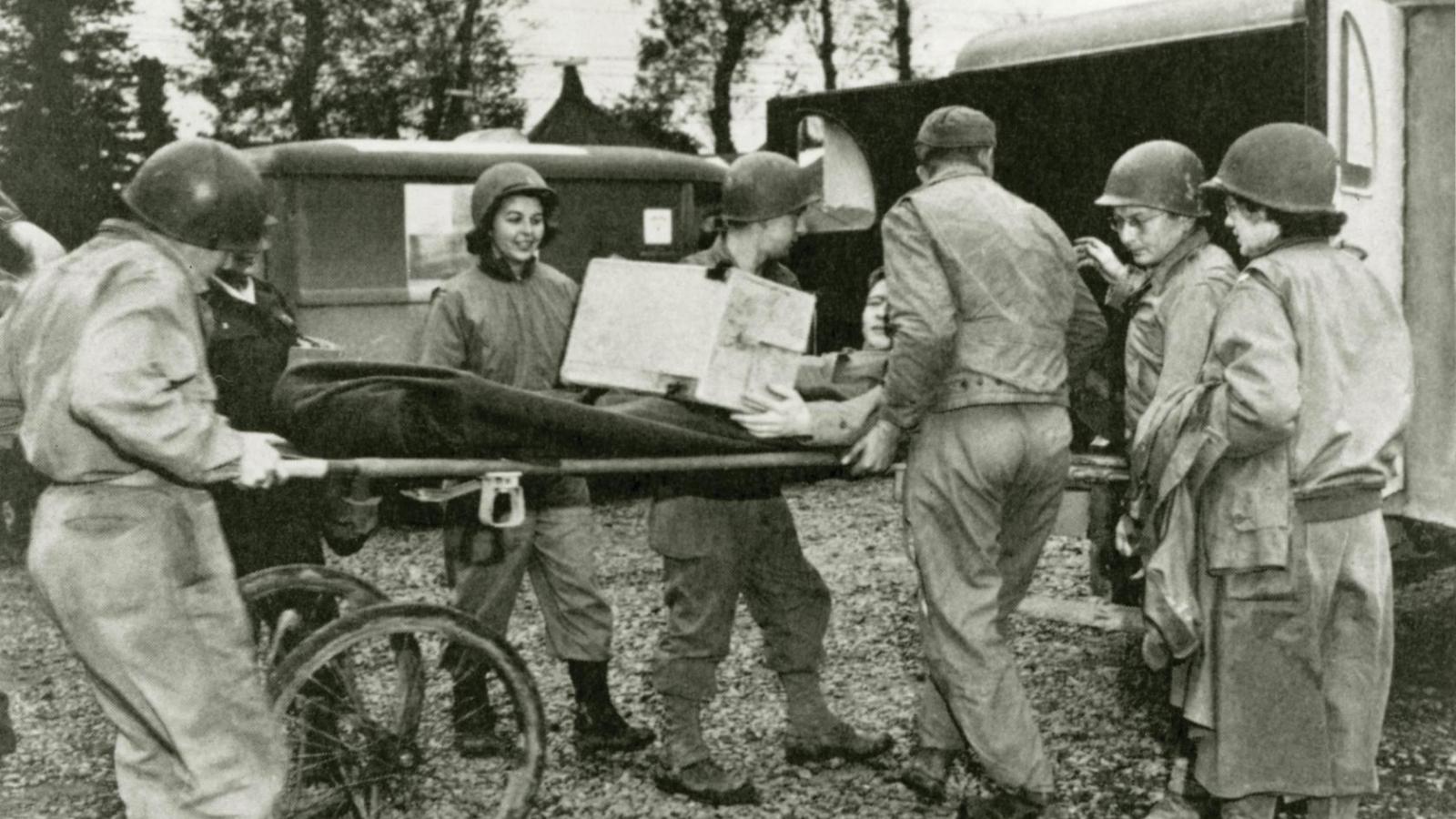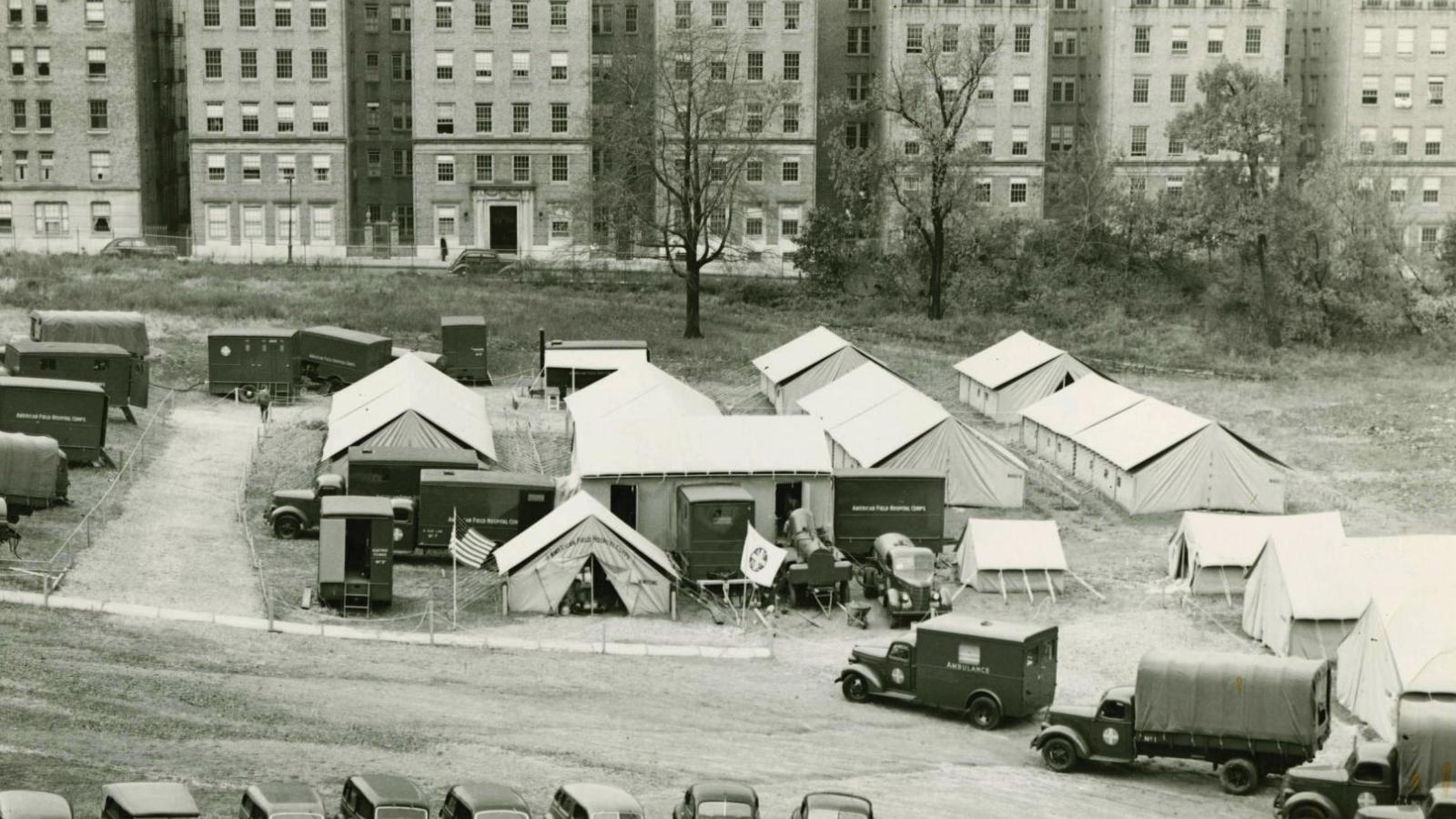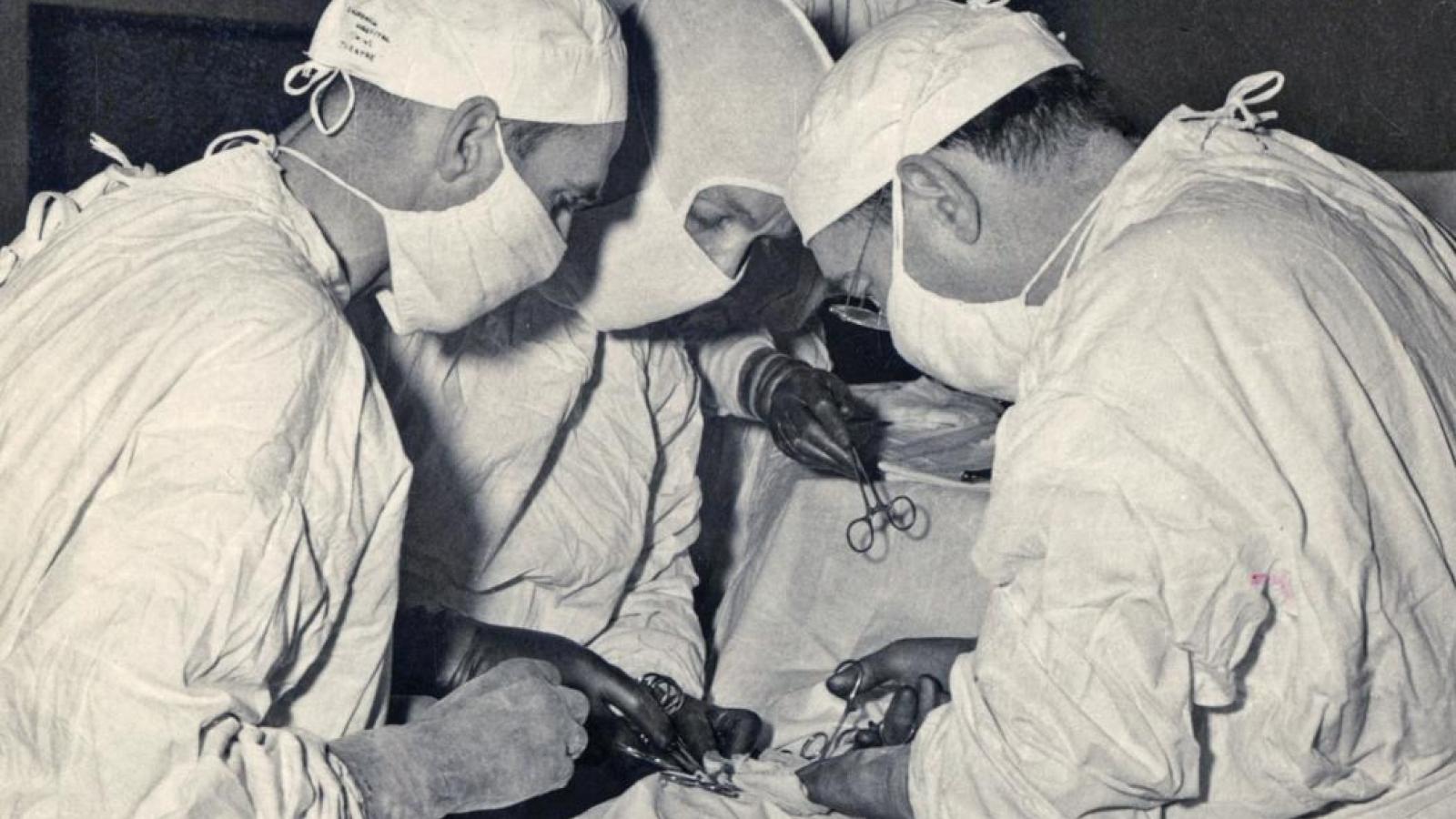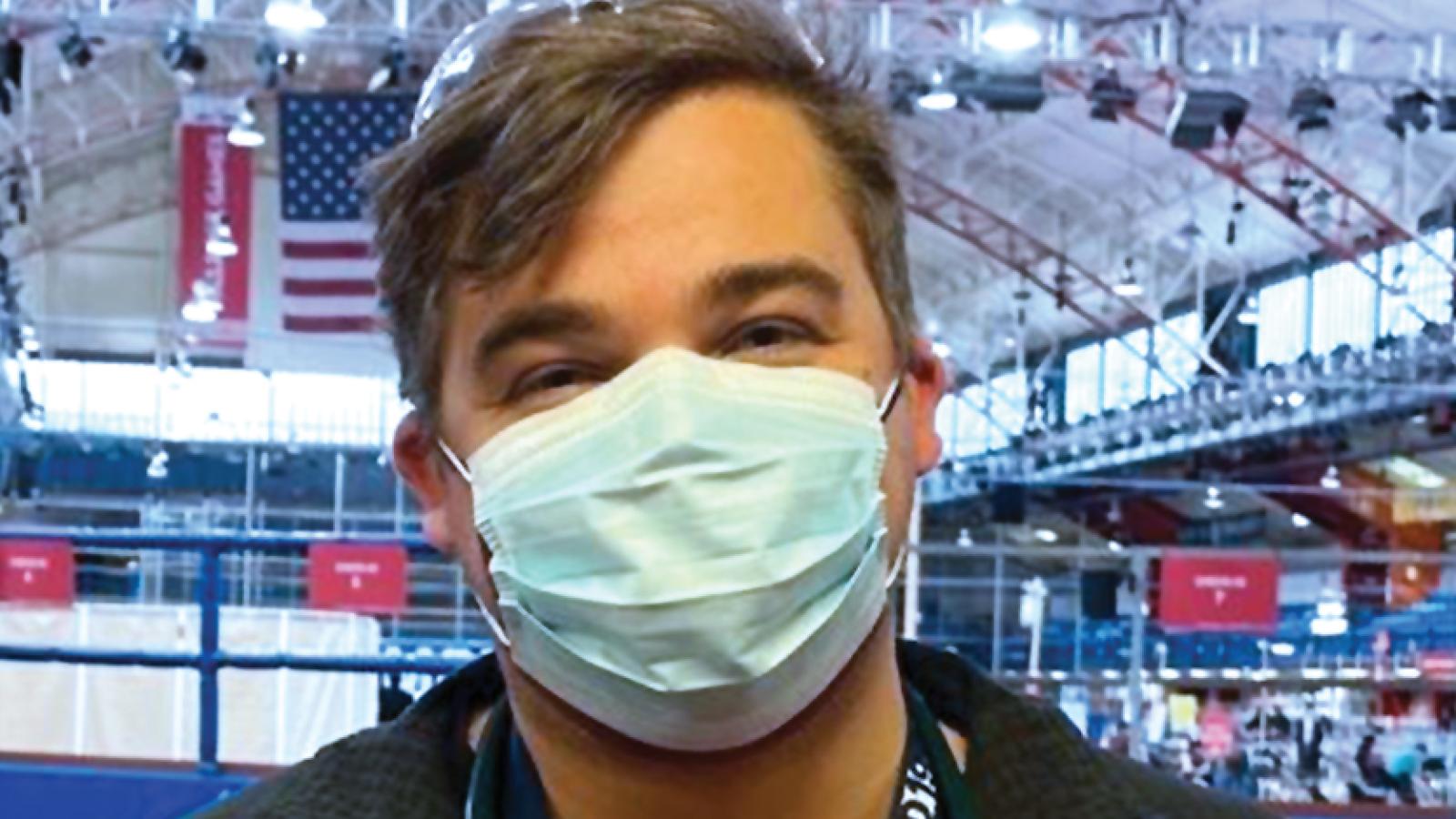Meeting the Moment
By The Editors
‘‘During the year there have been many happenings of more than usual significance and importance. … With the solution of one problem or the satisfaction of a long-felt need, new problems come to the surface and new needs become urgent.”
So began the Annual Report of the President of Columbia University … in 1925. One hundred years ago, the report included the medical school, which delivered updates spanning syphilis services to tropical diseases. It also highlighted the milestone construction of the medical center, which broke ground Jan. 31, with “steel beginning to rise” by the end of the academic year.
It’s hard to ignore the relevance our history holds to our present.
From evacuating patients in foreign wars to developing tests for novel diseases, Columbia has consistently responded to challenges with resilience. Since granting the first medical degree in the 13 colonies, our school has navigated episodes including the American Revolution, the New York City doctors’ riots of the late 1700s, the yellow fever and cholera epidemics, the Civil War, World Wars I and II, the Great Depression, and the COVID-19 pandemic. Throughout this history, our lifesaving work in clinical care, research, and education has continued to serve the health and well-being of hundreds of millions of individuals.
Today we navigate a new moment. Our community faces anxiety and uncertainty as we approach the very real hurdles in our path. But our focus is also on the work at hand. Through our clinical care, patients are finding new hope; through our training programs, students are building their futures; and through our research, crucial insights are emerging across the medical center, from the mechanisms of aging and tumor cell communication, to the new frontier of artificial intelligence.
In addition, we are invigorated by developments such as the nongovernmental funding our researchers are receiving from organizations that value our investigations, and by our expanding clinical footprint with projects including the construction of NewYork-Presbyterian The One in Westchester, a state-of-the-art outpatient facility housing over 90 subspecialties on a 25-acre campus that will open its doors this autumn.
With these photographs, we look back at moments from the past 100 years—not just to remind ourselves what we’ve achieved, but also to position ourselves for the work ahead. Indeed today, as it was a century ago, there is “steel beginning to rise.”
Opening a New Medical Center
Following a variety of challenges over decades, including a temporary closure due to the American Revolution, the resignation of almost the entire P&S faculty (due to an 1826 dispute over the composition of the Board of Trustees), and more than three relocations, the Columbia-Presbyterian Medical Center, the world’s first medical center to combine complete facilities for patient care, medical education, and research in a single complex, was dedicated on Oct. 12, 1928, in Washington Heights.
Serving in WWII
“The immediate future of the programs in graduate and postgraduate medicine remains uncertain and may be influenced seriously by the national emergency,” said the dean of medicine in the 1941 annual report, citing the many recent graduates being called for military service and the increased clinical responsibilities for those who remain. However, the report said, based on the strong foundations laid by predecessors, “We can look forward with confidence to the trying period immediately ahead. The Medical Center has the virility, the stability, and the vision to continue to play its part in the rapidly shifting responsibilities of medicine in a modern society.” The following year, the U.S. Army’s 2nd General Hospital was organized. Staffed largely by doctors and nurses from Columbia-Presbyterian, it was stationed for two years near Oxford, England, before shipping to France after D-Day. A test run of the 2nd General Hospital was conducted in the medical center’s backyard. Columbia-Presbyterian doctors performed surgery at the 2nd General Hospital near Oxford and evacuated patients in Lison, France.
Delivering Care in the Dark
On Nov. 9, 1965, a massive power failure hit the northeastern United States and Ontario, plunging more than 30 million people into darkness. The medical center stayed open throughout the crisis, with emergency generators allowing one elevator to operate and providing limited lighting. Medical and nursing personnel remained at their posts overnight, and students volunteered to help. The ER never closed, and no patients were lost. Though short-lived, the episode showed the determination of the Columbia character. “November 9 is a night that will be remembered with justifiable pride, because of the many examples of thoughtfulness, cheerfulness and hard work under difficult conditions,” said The Stethoscope, the medical center’s newsletter.
Piecing the AIDS Puzzle Together
While the country reeled from a mysterious disease, Columbia was part of the fight for answers to overcome it. Among many efforts, the lab of Carole L. Berger, PhD, for example, developed one of the first available diagnostic tests. “We were able to diagnose [an] AIDS patient because the test showed that he had abnormal antigens … and the [lymph nodes] also contained a malignancy typical of AIDS even though his skin showed no signs of this disease,” Dr. Berger, director of the Immunology-Phenotyping Service, said in a 1985 issue of The Stethoscope. “AIDS is a major research puzzle that still is without a satisfactory answer,” she continued. “Why is it evolving now? Why does it attack a particular T-cell subset? … Researchers, clinical investigators and epidemiologists are coming together to review all the pieces.” Later, an initial HIV Center Investigators Weekly Meeting took place in 1988, a precursor to the HIV Center’s ongoing Grand Rounds. (At center are HIV Center Director Dr. Anke Ehrhardt and HIV Center co-Directors Drs. Zena Stein and Robert Spitzer. Participants include Dr. Rafael Tavares, Dr. Robert Kertzner, Dr. Robert H. Remien, and Helen Gasch, MPH.)
Rising to the Challenges of COVID-19
In the spring of 2020, students nearing graduation answered the call to care for patients and later supported the medical center community and neighbors, playing a key role in early vaccination efforts in Washington Heights, Harlem, and the Bronx. The pandemic upended their education, but also imparted profound experiences that would shape their careers. “We weren’t just learning from our professors anymore,” Samuel Burnim (above), who was then a fourth-year medical student, told the Columbia University Irving Medical Center Newsroom. “When we helped with some of the PPE distribution around the city, [with] community members and community leaders telling us about their needs, they were our teachers. In a certain sense, I see the educational experience broadening.”
Remembering an Earlier Pandemic: Caring for “Spanish Flu” Patients
“When so many members of our Medical and Nursing Staffs were absent on war service, the influenza epidemic suddenly came upon us creating a situation as grave as the Presbyterian Hospital has ever faced,” said the 1919 annual report of Presbyterian Hospital, the main clinical partner of Columbia’s College of Physicians and Surgeons. “In this crisis the Medical Wards were temporarily placed at the disposal of the patients suffering from this disease—some 850 in all—while in the emergency, medical cases were admitted to the Surgical Wards.” The report also notes that the School of Nursing, then operated by the hospital, suspended classes as its students were pressed into full-time service on the wards. Ninety students came down with influenza.
Expanding the Clinical Footprint
During this time of uncertainty, construction is tirelessly moving ahead on a new, state-of-the-art ambulatory care facility in White Plains, which will welcome patients this fall. Adding to a footprint of new 21st century buildings that includes the Jerome L. Greene Science Center and the Roy and Diana Vagelos Education Center, this modern space will feature advanced imaging, exam and diagnostic rooms, six operating rooms and four endoscopy suites, 30 post anesthesia care unit beds, an infusion center, and more, all integrated under one roof to serve patients north of Manhattan with convenient, coordinated care.










